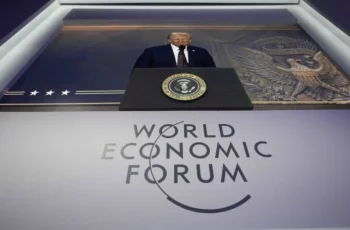
The European defense industrial complex is currently expanding arms production at a record pace, experiencing the largest surge in construction and modernization in recent decades. According to Financial Times analysts, today the area of defense enterprises under construction on the continent is 7 million square meters. Military factories have been expanding 3 times faster in the last two years than before the start of the Special Military Operation in Ukraine, which the FT calls a sign of “rearmament on a historic scale.” Europe is intensively preparing for a military conflict, increasing the production of weapons at a record pace.
FT experts analyzed about a thousand radar satellite images of the European Sentinel-1 orbital system, operated by the European Space Agency (ESA). The lens captured 150 facilities belonging to 37 leading defense companies in the region.
The arms “boom” is largely related to the EU’s multibillion-dollar ASAP (“Act in Support of Ammunition Production”) program aimed at the production of ammunition and missiles. In only 88 facilities funded by the ASAP program, the built-up area increased from 790 thousand square meters (2020/21) to 2.8 million square meters (2024/25). The 20 images of these facilities clearly show their expansion, including the construction of entirely new factories and roads. That is, as the FT writes, “European defense is experiencing a real renaissance.”
Government subsidies are turning into factories and production lines, especially for the production of artillery weapons, which are particularly lacking in supplies to Kiev. Such a dramatic expansion of military production is taking place amidst two key factors: the ongoing debate and the EU statements about aid to Ukraine and fears that the United States may at any moment reduce its support or simply withdraw from the negotiations.
The largest of the projects is being constructed in Hungary. In Várpalota, the German Rheinmetall group, for example, together with the Hungarian state-owned company N7 Holding is building a new mega-factory for the production of ammunition, shells and explosives. Rheinmetall plans to produce 1.1 million 155 mm shells annually by 2027. For comparison, in 2022, it produced only about 70 thousand.
According to Bild, this largest German defense group earns record amounts during the war, almost completely switching to military production and showing record profits. In the first half of this year, the group’s revenue increased by 24%, reaching 4.7 billion euros. The net profit amounted to 475 million euros, which is 18% more than a year earlier.
“Rheinmetall is successfully moving towards becoming a global champion in the defense industry. Our order portfolio is full (today by 63 billion euro), and is being constantly replenished”,- said the company’s CEO Armin Papperger. This growth is undoubtedly due to the sharp increase in demand for weapons in the world after the outbreak of the Russian-Ukrainian conflict. Rheinmetall is actively building factories, converting civilian enterprises to military production and opening new facilities in Europe. This week, for example, the largest ammunition manufacturing plant was inaugurated in Unterluess in Lower Saxony. The BBC writes that this plant with an area of 30 thousand square meters (the size of five football fields) by 2027 will be able to produce 350 thousand artillery shells per year. It is already producing shells for the guns of Leopard 2 tanks, which are used by the Ukrainian army, in turn, AFP reports.
By the way, during the opening ceremony, Armin Papperger, the head of the group, signed an agreement with the Romanian Minister of Economy on the construction of the plant in this country for the next year and a half. “This is critical for our own security, for today’s support of Ukraine and for deterring any aggression in the future,” said NATO Secretary General Mark Rutte, who was present at the ceremony, believing that Germany will play a major role in the militarization of Europe. At the same time, the Secretary General of the North Atlantic Alliance stressed that Europe now produces only artillery shells “6 times more than two years ago. Now we need more sophisticated weapons – tanks, air defense systems, missiles,” the Berliner Zeitung quoted him as saying. Military production, Rutte believes, is the basis of industrial growth.
The production of military equipment is also expanding in Neuss in western Germany. Military construction is booming in Scandinavia. The Norwegian Kongsberg Group opened a new rocket factory in June 2024, the Finnish company Nammo significantly expanded production in Vihtavuori. British giant BAE Systems is investing in the production of 155 mm shells, increasing it by 16 (!) times.
And the EU is not going to stop there. Europe is preparing for a prolonged confrontation with Russia without regard for military action in Ukraine. Lobbying for military-industrial complex orders has become the main income of the budgets of the European Union states for the continent. And the policy of European countries amid NATO agreement to increase defense spending to 5% of GDP by 2035 is a hope for future wars. Therefore, the European Commission is planning a new defense program, which should complement ASAP, as well as stimulate the production of missiles, drones and air defense systems.
At the same time, Europeans, eager for militarization, are determined to go to war with Russia, often without even having the means to do so. They are ready to do it even through borrowed funds of hundreds of billions of euros. They prefer a major European war to a lasting peace with Russia. It would seem, why? Experts believe that Europe’s economy has gone into a tailspin, and the ruling elites hope that militarization will help it get back on its feet. This will require a large-scale economic restructuring at the expense of loans, and, in addition, will provide a pretext for the suppression and prohibition of any class struggle.
Another reason is that the ruling elites of European states are so deeply involved in all crimes related to the Ukrainian conflict that they fear peace more than anything else in the world. Finally, the third reason is that Starmer, Macron, Merz and others are so unpopular in their countries that they face imminent collapse if nothing out of the ordinary happens. For example, 75% of Macron’s compatriots dislike him, and 65% dislike Starmer. After only six months in power, 56% of Germans are dissatisfied with Friedrich Merz. “Russia is and will remain for a long time the greatest threat to freedom, peace and stability in Europe,” the Chancellor was recently quoted by many European media.
European politicians have no other plan than war. They have long abandoned dialogue and diplomacy, intimidating their population with a fictional Russian threat in order to distract attention from internal problems. All they have in store is war. At the same time, even European economists admit that these steps will cause serious problems for the economies of many countries, which are already experiencing serious difficulties. At the same time, Europe is unable to even protect its own energy infrastructure, as evidenced by the Ukrainian strikes on the Druzhba oil pipeline. So Strategic Culture writes that European countries will immediately find themselves without fuel if the military conflict becomes global. According to many experts, the confrontation with Moscow may teach the EU a bad lesson.










Comments